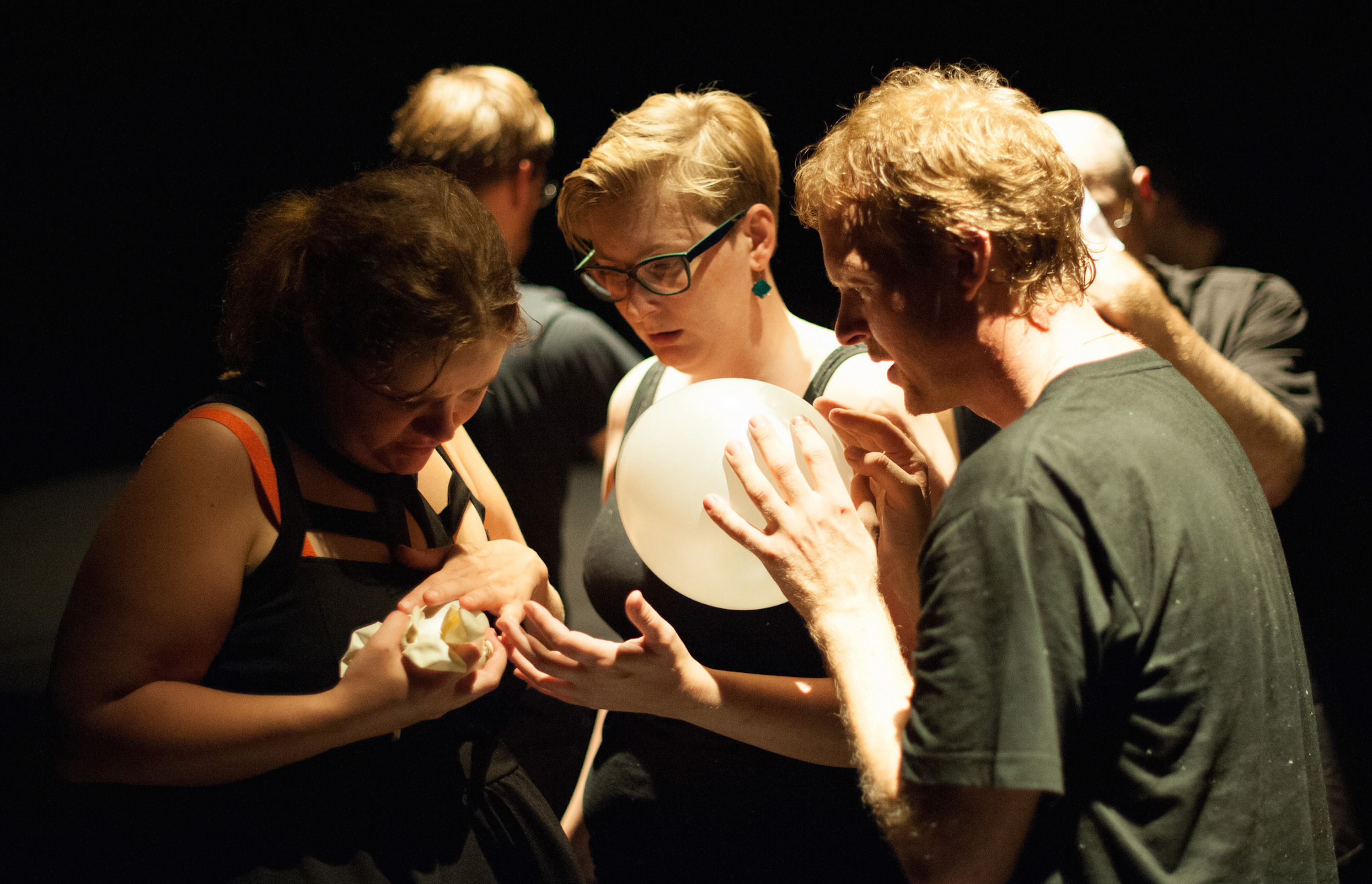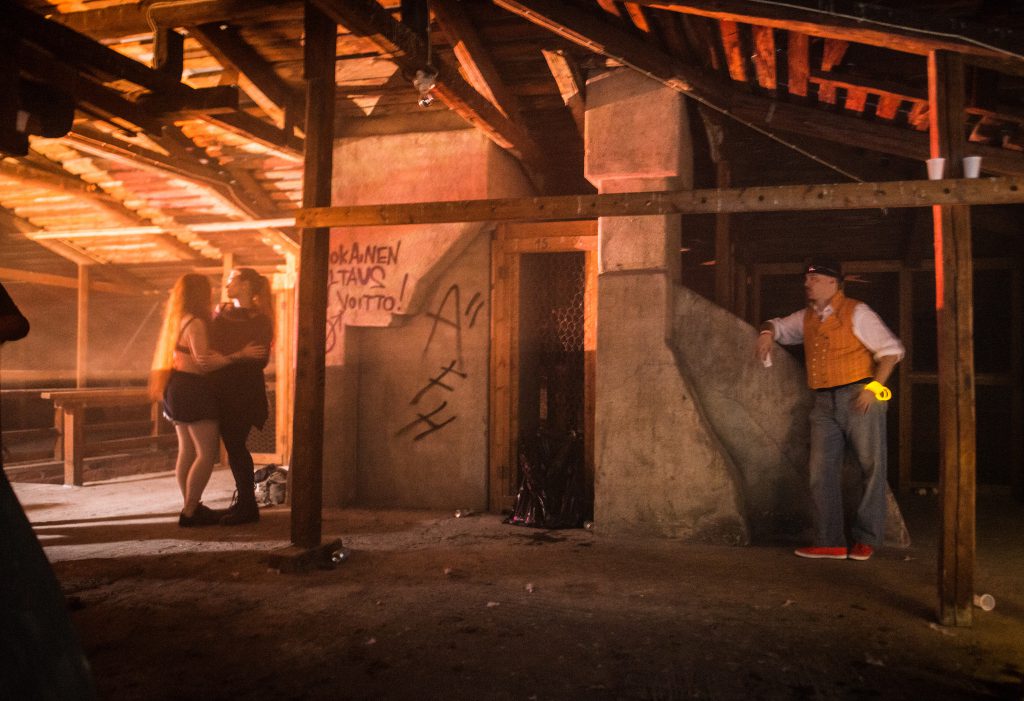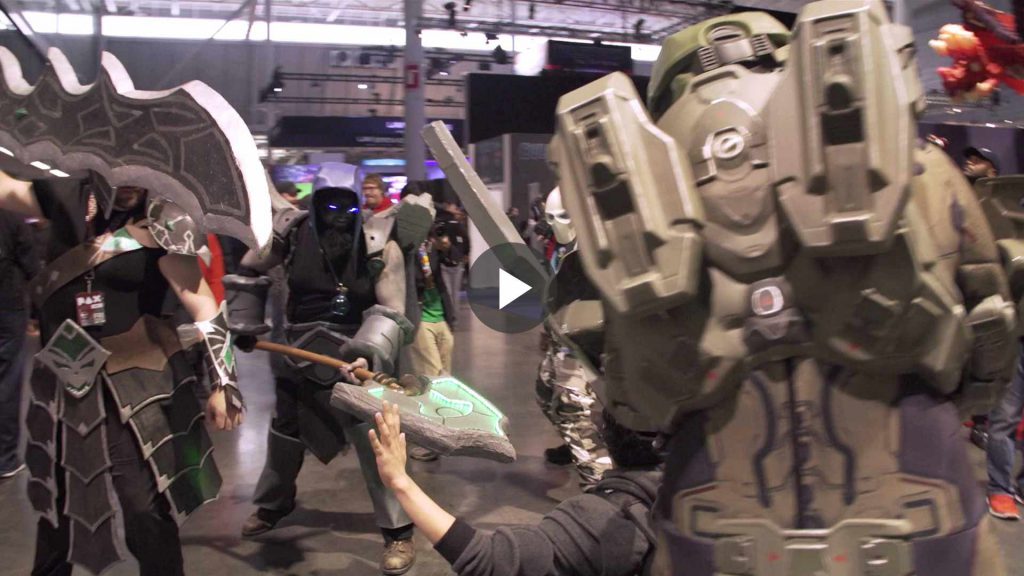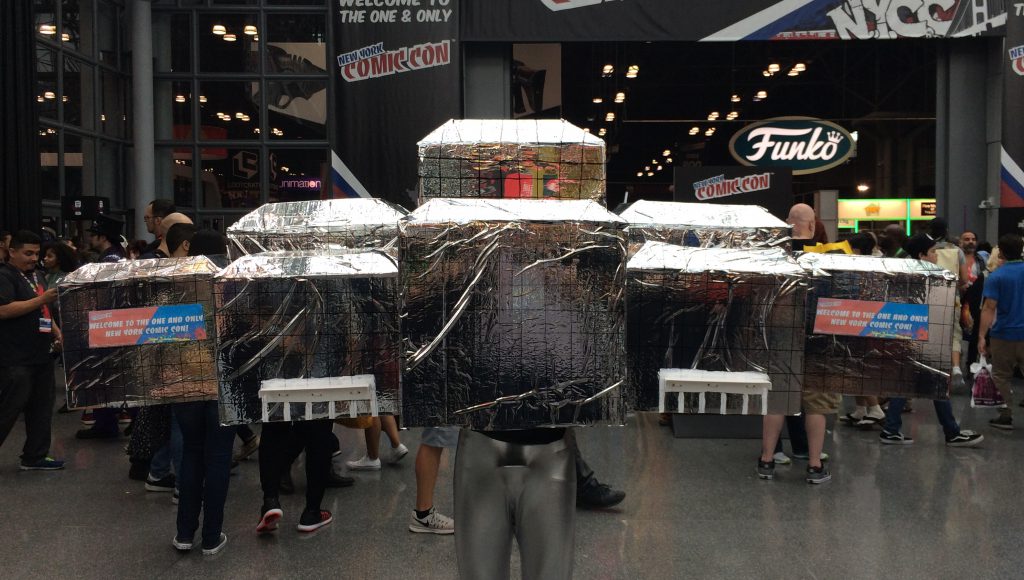Lizzie Stark closes her three-part essay demystifying larping by looking at it as a form of theater—really, as an art form. Here she participates in a life and death experience. Return to parts 1 and 2.
Audience is the key difference between any kind of theater and larp. In a play, the audience watches the actors perform, and the actors perform for the entertainment and edification of the audience. In larp, there are no outside observers, only participants; the roles of performer and audience are collapsed into what researchers such as Dr. Markus Montola have called the “first person audience.” Each participant is the author of their own performance, and the audience for their own emotions as well as the performances of their co-players. And, in fact, reactions to their co-players’ performances often occur through the lens of the character they are currently playing.
The emphasis on participants over audience also shifts the physical experience of the performer. Traditional theater prioritizes what the audience sees and hears and their staging reflects that. Set and costuming must look real, but needn’t necessarily be made of, say, real leather or plate mail. The directors arrange the actors strategically, in groupings that would feel unnatural in regular life but make the performers visible to a wide number of seats. If the actors do a good job, the audience may take the emotions of the plot and characters onto themselves, crying during a death scene, for example, or longing for intimacy during a romantic scene. In theater, the actors enjoy the lion’s share of the alibi to behave differently, while the dark room quietly gives some alibi to the audience to feel emotions more visibly than they might in everyday life.
Larp also manipulates elements such as set, costuming, and physical interactions, but it does so with a different aim in mind. The emphasis is not on how it looks and sounds to an external party, but on how it feels to the participants who simultaneously perform and absorb the larp. How the scenery looks is only important insofar as it helps the participants to feel. Wearing girdles and a long-line bra might help a participant feel that she or he is a 1950s housewife, even though such garments may remain hidden to co-players.
Since larps rely on improvisation, pre-planning every fight or kiss is usually not possible.
Likewise, how a tender moment appears to onlookers is less important than how it feels to a participant. Instead of asking participants to kiss, a larp might call for a tender touching of hands while co-players gaze into each others’ eyes, simulating the feeling of intimacy. This also dovetails with safety concerns in larp—often designers do not want players and characters to have identical experiences of say, lust and violence, for safety reasons. When one character stabs another, we don’t want the players to use real knives. Characters might have sex, but their players shouldn’t feel obligated to. In a play, of course, these moments are scripted and practiced before performance—the actors work together to become comfortable, and choreograph their smooches or rapier fights. Since larps rely on improvisation, pre-planning every fight or kiss is usually not possible. The solution is to produce a set of actions that stands in for another—different larp communities may call these “mechanics,” “techniques,” or even “metatechniques.” Player-characters might touch hands and make eye contact instead of making out, or use a ritualized exchange of phrases to play through a sex scene. Throwing a punch in super slow-motion and permitting the victim of violence to choose its effect can allow both parties some measure of control. Many larps also use techniques that allow participants to briefly step out of game and negotiate with one another about scene elements such as violence or intimacy before undertaking sensitive scenes.
Larp and theater also differ in other key respects: theater uses trained and rehearsed performers, while larp relies on the improvisation of larpers—a group that can include complete newcomers as well as experienced hands. While theater relies on convention—the actors do stuff on stage, the audience watches passively and applauds at pre-selected intervals—each larp must teach participants how to engage. Larp, therefore, is an art form that revolves around social engineering—the practice of manipulating and subverting social structures in order to generate enough alibi to produce an interesting, thought-provoking, or entertaining experience for participants. A common method larpers use for this is a pre-game workshop. These workshops can take many forms and accomplish many different objectives, depending on the game. Most importantly, the workshop allows larpers to meet and get to know each other before playing, permitting them to establish a base level of trust with one another as people before assuming their roles. During workshops, facilitators might explain information about the game world or act structure, assign characters, let participants practice story techniques and mechanics, reinforce the larp’s theme with sharing exercises, or present a series of activities designed to help players flesh out their characters and social groups. Sometimes, workshops even include scenes that happen before the larp officially starts, as a way of helping players get the jitters out.
One larp heavily influenced by theater techniques is White Death by Nina Rune Essendrop and Simon Steen Hansen. These two designers were steeped in the traditions Denmark’s highly mannered freeform scene which typically includes games with pre-written characters, discrete pre-written scenes, a strong and very active facilitator, and typically take place in unadorned classrooms. Although influenced by that design tradition, Essendrop and Hansen wrote this larp for Black Box Copenhagen, a festival devoted to larps designed for black box theater settings. At the time, they were both studying for a masters’ in theater and performance studies at the University of Copenhagen. White Death broke the traditional mold of both freeform and black box larp in the way it drew on these disciplines, relentlessly insisting on physicality. The productions of experimental stage director Robert Wilson and French avant-garde director Antonin Artaud, the Danish dancing company Granhøj Dans, Balinese dance, and Laban movement analysis inspired the duo. The resulting larp used simple props such as white balloons, white sugar, white paper, white ribbons, and sheets; lit areas; and evocative music.
The lack of language and the extreme physical restrictions transformed each participant’s body into a game piece.
White Death revolves around a group of settlers who venture into the mountains to form a better society. But when winter comes, in a very Nordic twist, they all die and turn into Transparent Ones. The workshop transforms untrained participants into skilled players through extensive workshops around movement. The life of the humans is hard, heavy, sudden, violent, and isolated. In contrast, the Transparent Ones move lightly and freely, and like to be together and laugh. Although sounds are permitted, no language is allowed in the game. Participants create a character out of a physical restriction. When I played, the slip of paper I drew from the hat decreed that my character had fingers that always pointed at the ground, and a head that lolled to one side, never in the middle. One character could only move in jumping jack motions. Others have imaginary sticks connecting bodyparts such as wrists and knees. The lack of language and the extreme physical restrictions transformed each participant’s body into a game piece; the experience of playing White Death is insistently physical, and uses that physicality to evoke feeling in participants.
Over the course of the first act, the facilitators introduce three symbolic props: white balloons representing dreams, white cups of sugar representing survival, and white paper representing faith. As the participants interact with the props, balloons—and thus dreams—pop; participants fight over sugar, and get covered in it as their physically restricted selves try to drink it; and meaner characters rip faith to shreds while a few desperately cling to the scraps.
During the second act of the larp, the storms begin. During each storm, the barrier between humans and Transparent Ones thins, allowing Transparent Ones to reach into the circle of light where humans dwell and pull them to the dark peaceful half of the playing space. Gently, the Transparent Ones usher humans into their new existence, massaging out their physical restrictions and gracing them with a white ribbon. By the end of the larp, all the humans have been transformed, and the Transparent Ones are happy and together in the darkness.
This larp is aesthetically beautiful to facilitate and play. Set to a soundtrack of folk rock, participants in black clothes play out their grunting relationship dramas and endow bright white props with the deepest of meanings. At one point, I looked up from my narrative and took stock of the room. In corners, a man showed balloon shreds to a woman and wept. One character writhed on the floor, unable to rise due to her physical restriction and shrieking her displeasure. Shambling bullies chased someone who had a few shreds of faith left. I thought to myself, “whoa, this is some artsy fartsy shit.” But I had been so deep inside the head of my own character, that it hadn’t occurred to me at all how bizarre my behavior would be considered in the outside world. As a participant, after playing one act in the hard, heavy, sudden and violent life of the humans, I felt transformed when a Transparent One removed my physical restriction. It’s a little bit hard to explain how in words. The closest I can get is that I felt suddenly capable of happiness; I felt light; I felt loved.
The alibi of the production freed us from ordinary mindsets and our ordinary physicality.
Essendrop and Hansen got the most out of both theatrical and larp mediums. They used theatrical techniques—lights, music, and graphic props—to set an emotional tone that fit the story, and to demarcate the space and time of the larp as a heightened and abstracted setting. They used movement workshops inspired by theater and dance to transform the motions of their average players into something that looked and felt significant and meaningful. But in the end, the performance was true larp. The alibi of the production freed us from ordinary mindsets and our ordinary physicality. We improvised relationships, struggles, and their resolutions on the spot. The larp’s restrictions palpably located the ensuing emotions and connections within our own bodies. We weren’t witnessing and sympathizing with someone else’s epiphany. We could feel the sugar melting on our skin, the desperate longing for the last sad, half-deflated white balloon, the savage glory of ripping someone else’s faith to shreds.
The larp delivered the primacy of these things into our bones, making tangible the fierce desire to survive. As the experience progressed, we felt an abstract, aestheticized longing for death, not as an end, but as the freedom from humanity’s sometimes inane struggles. And at last, to the strains of Nick Cave’s “Into My Arms,” we entered the transcendental world—happy, light, and together—beyond the grave. ♦
(Image credit: All photographs of the White Death larp being performed in 2014 by Xin Li via Flickr.)












